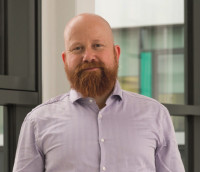The Digital Packaging Days of the Deutsches Verpackungsinstitut e. V. (dvi; German Packaging Institute) provided participants with insights and best-practice information on sustainability and added value through digitalization. The topic of bioplastics was also dealt with in detail.
The packaging industry network recently met as part of the 31st Dresden Packaging Conference, which took place again this year in its virtual form as the Digital Packaging Days. At the industry’s big end-of-year meeting, leading representatives from business, research, NGOs and start-ups shed light on the current situation surrounding the circular economy of packaging, provided insights into recycling and the use of recyclates and presented innovative ways to achieve even more sustainability and to the use of digital technologies.
“Thinking differently is playing a big role at the moment,” dvi Managing Director Winfried Batzke welcomed the participants to the Digital Packaging Days. “It’s about transport without emissions, food without meat and packaging without waste. How we can implement a cycle without corners and edges for packaging, where we currently stand and which paths lead to the goal, that’s what we’ll be addressing over the next two days.”
On the first day, the conference took a broad look. The participants learned from top experts from the Cyclos Institute, the Stiftung Zentrale Stelle Verpackungsregister (Central Packaging Register Foundation), the digital platform Cirplus, the WWF and the Compo GmbH about the current state of recycling in Germany. They also learned which processes bring which advantages and disadvantages, what the regulatory path to the future looks like, how to secure high-quality recyclate despite a massive surge in demand, and how the different recyclates perform in practice.
The discussion round that concluded the first day dealt, among other things, with so-called bioplastics. According to Laura Griestop, Manager Sustainable Business and Markets of WWF Germany, the most important task is to close the cycles of plastic: “If the origin of the raw materials is good, that is without mono-cultures and the use of fertilizers, bioplastics make perfect sense.”
Gundula Rachut, board member of Stiftung Zentrale Stelle Verpackungs-register, emphasized the importance of good differentiation when it comes to bioplastics: “Drop-in plastics, which can go directly into the yellow bin, can also be made of bioplastics. In that case, they are recyclable and good from my point of view. Yet, there is still the issue of where the raw material comes from and what its footprint is.” One must also consider that “biodegradation” is difficult in Germany. In France and Italy, this might be better due to different processes and degradation times. “Overall, this is a difficult situation for pan-European producers who want or need to serve all markets.”
On the second day, the conference led the participants more into concrete solutions and best practices. Top experts, scientists and founders from HelloFresh, Vytal, Metsä Board, EPL, CCL Label and Haepsi showed innovations for reusability, successful design for recycling, added value, convenience and sustainability through digitalization, environmentally friendly solutions for labels and laminate tubes as well as award-winning take-away solutions.
An exciting highlight of the second day was the presentation by Dr Arne Roth, Head of the Innovation Field Sustainable Catalytic Processes at the Fraunhofer Institute for Interfacial Engineering and Bioprocess Technology IGB. He showed examples of the synthesis of ethylene oxide from CO2 and water using renewable energy. In this process, CO2 is converted to ethylene and water to hydrogen peroxide. In an electrochemical process, ethylene oxide and ethylene glycol are then produced from this.
According to Dr Roth, the combination of industrial biotechnology with PtX (Power-to-X – storage and use of surplus electricity from renewable energies) opens up rich, CO2-neutral and scalable possibilities of synthesization for polymers, plastics and packaging materials: “We should understand CO2 as a raw material and not demonize it.” His conclusion: “Conventional production of polymers is based on fossil raw materials. At the same time, there are bio-based raw materials from renewable sources. However, we need biomass for this, which we often need elsewhere, for example for food. One solution could be to broaden our perspective. Sustainability is not always and not necessarily biogenic. Starting with CO2, water and renewable energies, we can create sustainable alternatives here.”
According to dvi Managing Director Winfried Batzke, the conference made it clear, once again, “that the circular economy will certainly not fail because of packaging. On the contrary: our industry is a pioneer. Companies are innovating at an extremely high rate and quality.”
At the conference, which was supported by Gerhard Schubert Verpackungsmaschinen GmbH, FachPack trade fair and Metsä Board, the Finnish sponsor gave participants an insight into its Excellence Centre in Äänekoski in a live link. This includes a design studio, packaging prototypes are produced and work is done on digital printing and intelligent packaging. In addition to a Virtual Store, there is an R&D laboratory that can run over 100 test methods. Furthermore, packaging is simulated and analyzed in the Excellence Centre and exhibited in the showroom. In cocreation workshops, together with the customers, existing packaging is optimized, new packaging is designed or new materials and solutions are worked on using state-of-the-art processes.
The dvi offers a detailed conference report on its website verpackung.org with an overview and key statements on each of the presentations and the focus topics.
http://www.verpackungstagung.de






